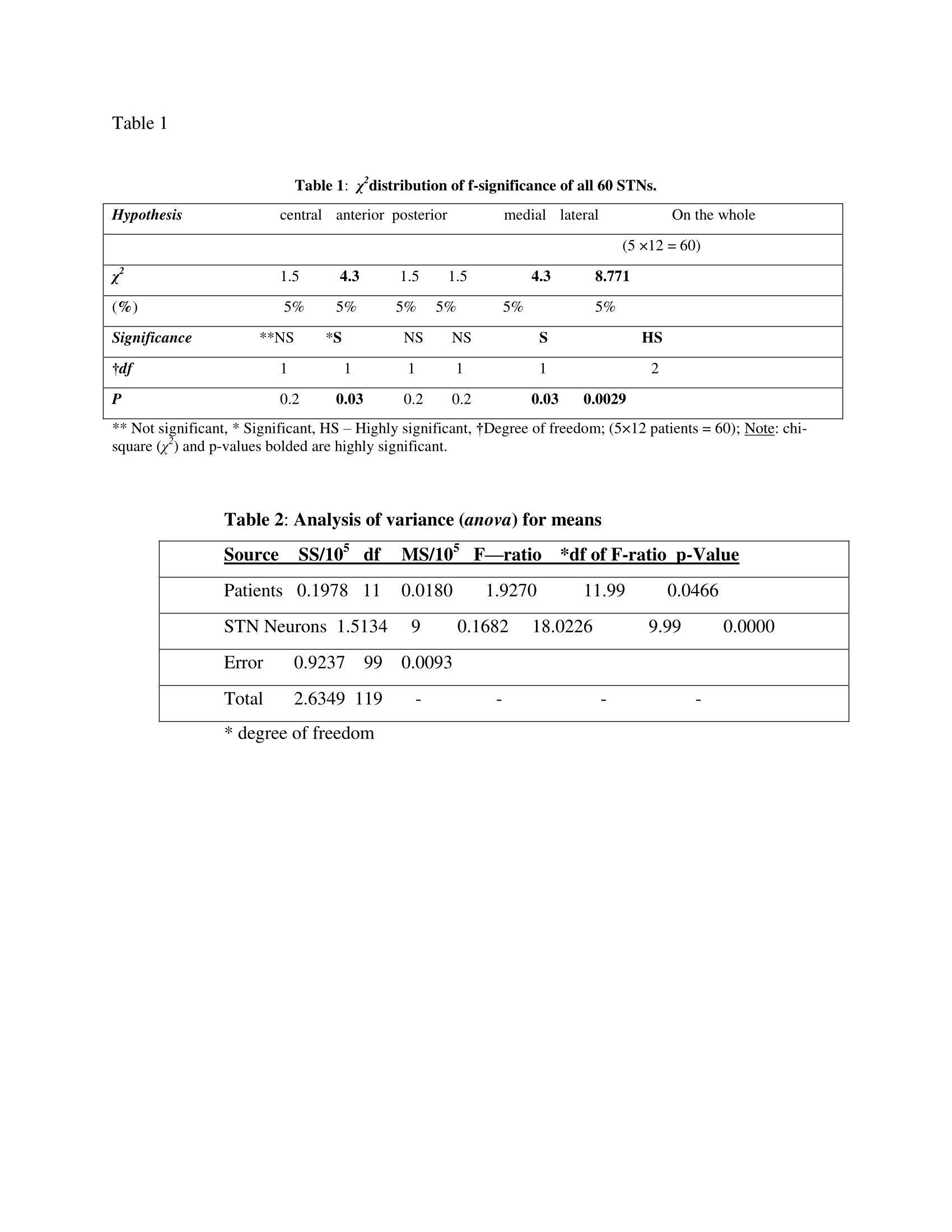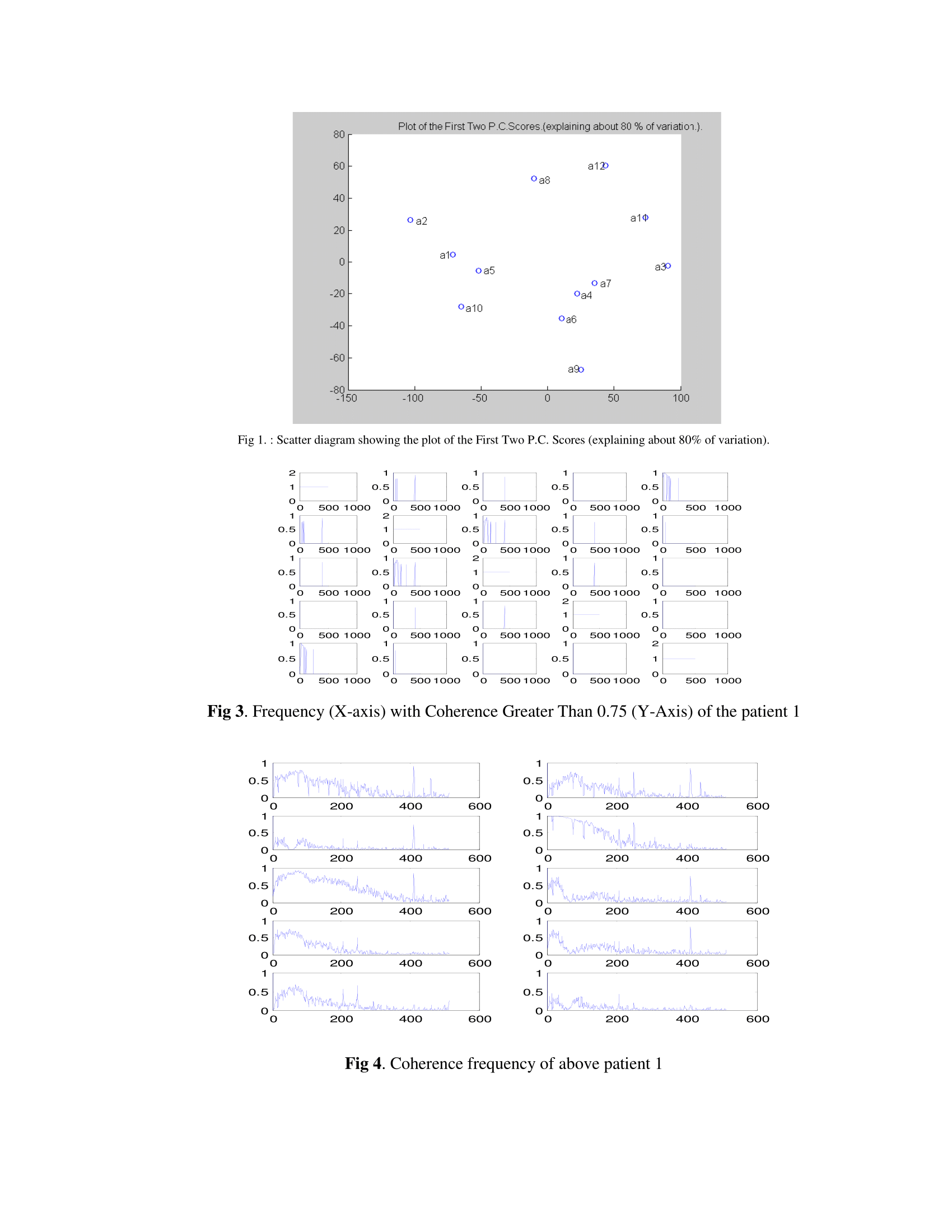Session Information
Date: Tuesday, June 6, 2017
Session Title: Parkinson's Disease: Pathophysiology
Session Time: 1:45pm-3:15pm
Location: Exhibit Hall C
Objective: To quantify the effectiveness of MER with DBS, characterize Parkinson`s disease symptoms/extract MER signal features of STN
Background: Parkinson`s disease targeting CNS, causing group of neurons in one area of brain to begin dying off, triggering tremors and shakes. PD is characterized by progressive loss of dopamine cells in SNp of mid brain. Sending targeted pulses to this area can help whip living neurons back into shape and stop Parkinson`s 4 cardinal signs
Methods: 46patients executed(12considered for computation). 5 electrodes were introduced into brain. Recording started from 10mm above the target, extended 10mm below. Stereotactic targets were acquired using CRW. Targeting performed according to Lozano’s method –2mm sections are taken parallel to the plane of anterior comissure posterior commissure line at the level with maximum volume of red nucleus, STN is targeted at 3mm lateral to antereo anterior lateral border of red nucleus. Stimulation(130Hz), 70µs pulse width. Response was seen with increasing amplitude. Best responded channel was chosen. STN was detected by a high noise with a larger baseline, irregular discharge patterns of multiple frequencies. PCA applied
Results: STN was clearly distinguished from the dorsally located zona incerta and lenticular fasciculus(fieldH2) by a sudden increase in background noise level and increase in discharge rate typically characterized by rhythmic bursts of activity with a burst frequency between 20 to 35Hz. χ2computation for f-distribution, patterns of F-ratios showed good results (Tables1,2). With a χ2(9.21) with 2 degree of freedom at 5%(p<0.0095)highly-significant.The effects of DBS were quantified by examining those PCs in a lower dimensional feature space.The scatter plot of first two scores showed 80%variance(Fig1,Table2). Coherence seen(4/12patients,Figs2,3)
Conclusions: The data analysis showed significant findings which led to attempts at more sophisticated analyses using multivariate techniques MER signal recordings leading to effective data summarization and measures of dissimilarity between patients as reflected in the signals recorded, consequent possible clustering among them. However, the analysis did not lead to meaningful clinical inferences. These analyses could possibly be applied to longitudinal follow ups and correlations with controls in the future.
References: 1. Julia SklarInjectable Wires for Fixing the Brain, Novel treatments for neurological diseases, Biomedicine, Oct 13, 2016
2. Tian-Ming Fu, et.al., Stable long-term chronic brain mapping at the single-neuron level, Nature Methods, Nature America 2016, Pages 1-8.
To cite this abstract in AMA style:
V. Rama Raju, R. Borgohain. Effectiveness of lead position with MER to determine STNs: A study of MER with DBS for quantifying the effects of DBS in Parkinson`s disease [abstract]. Mov Disord. 2017; 32 (suppl 2). https://www.mdsabstracts.org/abstract/effectiveness-of-lead-position-with-mer-to-determine-stns-a-study-of-mer-with-dbs-for-quantifying-the-effects-of-dbs-in-parkinsons-disease/. Accessed December 19, 2025.« Back to 2017 International Congress
MDS Abstracts - https://www.mdsabstracts.org/abstract/effectiveness-of-lead-position-with-mer-to-determine-stns-a-study-of-mer-with-dbs-for-quantifying-the-effects-of-dbs-in-parkinsons-disease/


